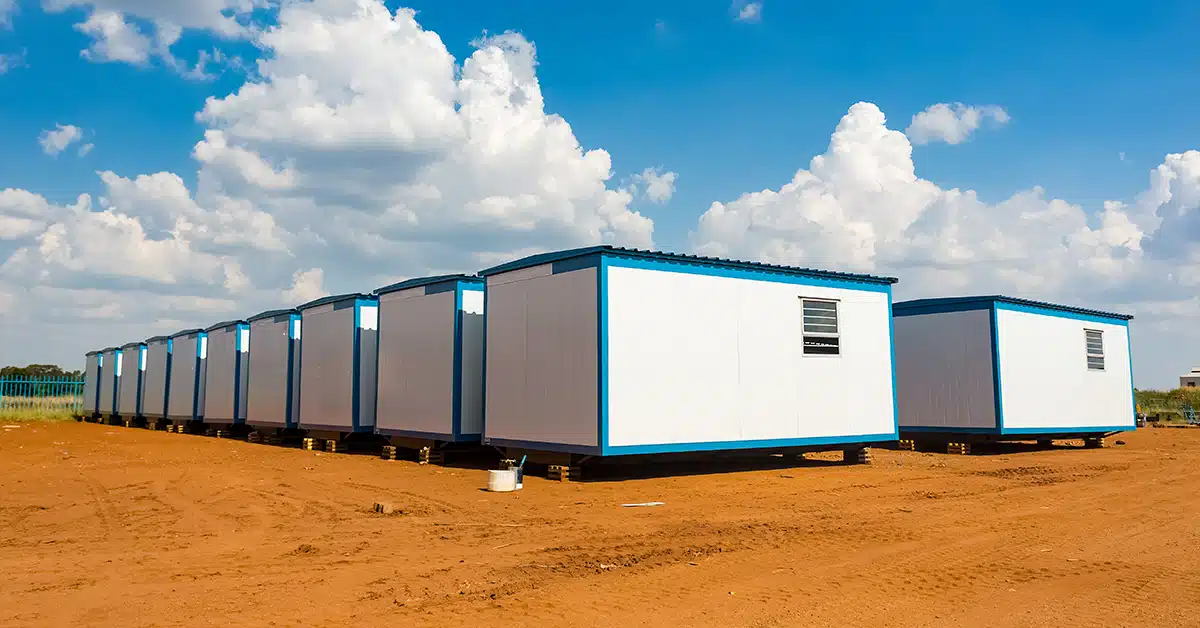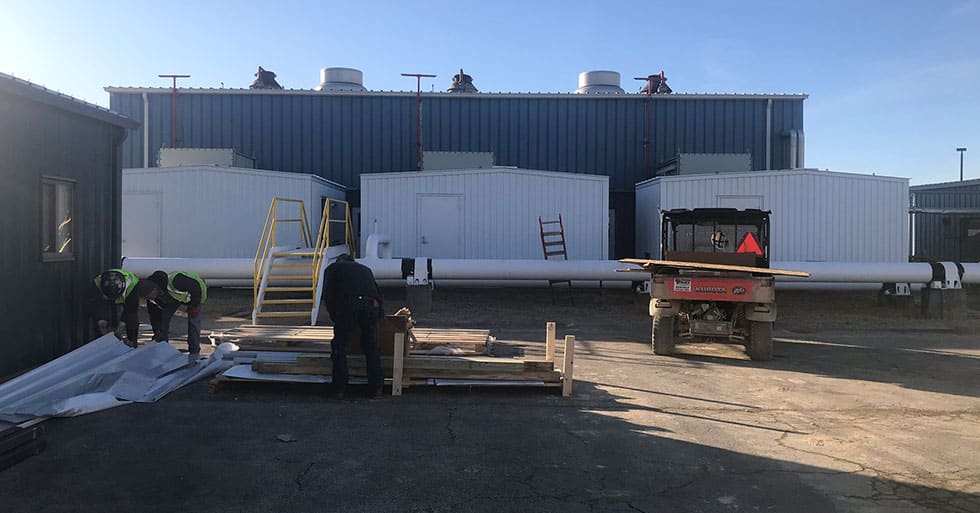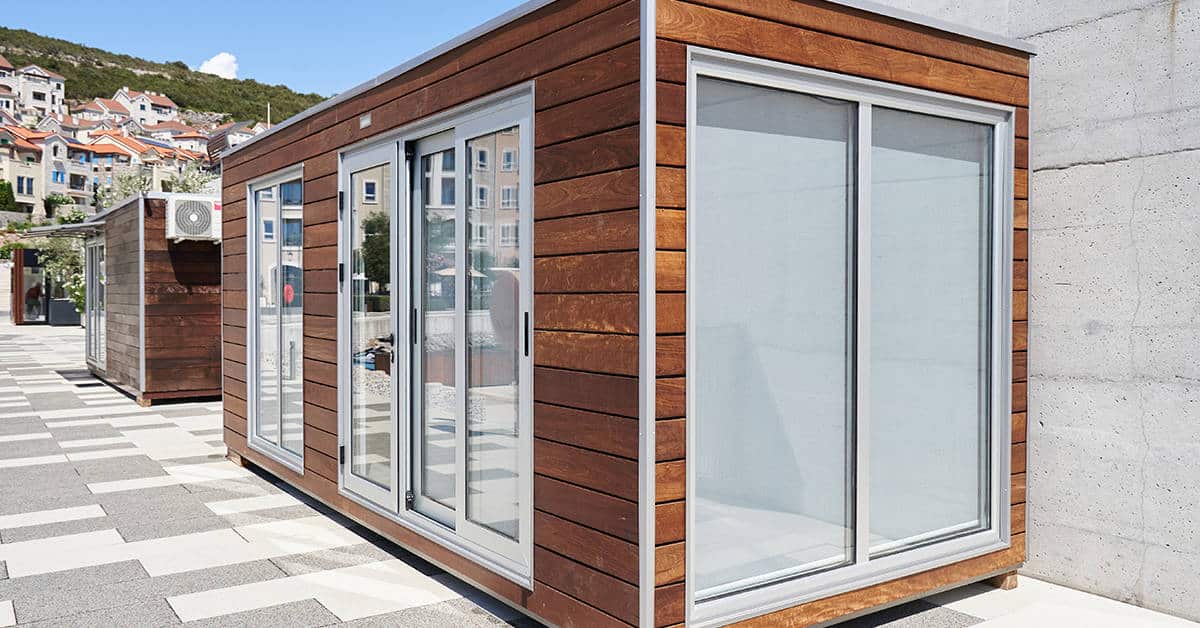Organizations need extra space from time to time to complete new projects, meet seasonal demands, or even store construction equipment.
Unfortunately, constructing a permanent structure can be costly and time-consuming. Sometimes, putting up a permanent space can be so expensive that it can take up a sizeable portion of your profits—making this option unfeasible.
Temporary buildings offer companies the extra space they need to complete seasonal projects without breaking the bank. These structures are also easier to construct.
Leading construction firms have devised innovative ways to create rigid structures for temporary use. These structures can range from temporary warehouses to farm buildings, emergency facilities, and more.
Although people may think that temporary structures only serve for a short period, the truth is they can be built to offer a long-term solution.
This guide will discuss temporary building solutions and the benefits of using temporary structures. We’ll also explore the various types of temporary building structures you can set up for your business. Let’s dive in!
What Is a Temporary Structure?
A temporary structure refers to any structure not designed for long-term use but merely to serve some functions in the short term. It can be anything from a tent to a storage facility to a prefabricated building intended to be used short term.
The history of temporary structures dates back to the Second World War.
During WW11, building permanent houses for soldiers was not an option. One of the reasons was the cost implications of building permanent structures. Another reason was that a big, permanent structure would easily reveal the troops’ hideouts.
For these reasons, the government devised innovative ways to build prefabricated structures that would meet the needs of their troops. This led to the emergence of temporary structures that were built off-site and sold to the government.
Benefits of Using Temporary Structures
There are many benefits to using temporary structures, including:
- Temporary Structures are Easy to Install
One of the limitations of building a permanent structure is the time it takes to set it up.
On average, it takes 7 months to build a house, and it could take longer depending on the size and complexity of the structure you’re building.
In contrast, temporary buildings take just a fraction of the time.
In fact, a temporary structure can be put up in a day or two if you have the team and materials at hand. This is because no foundation needs to be set up, and the structures are designed to be relatively light and relocatable.
- Temporary Structures are Cost-Effective
Another reason to consider a temporary building is the cost aspect.
Constructing a permanent space can cost tens of thousands of dollars. In contrast, a temporary structure is cost-efficient. It’s a no-brainer that the materials used in temporary structures are fewer and cheaper than in brick-and-mortar buildings.
- Temporary Buildings are Highly Customizable
Unlike permanent structures, which are rigid in design and form, temporary buildings are customizable. You can add any design element that suits your needs to a temporary structure.
You can increase the structure’s capacity and add more lighting, heating and cooling systems, and more. These structures are also very flexible. One structure can be used for various uses—from storage to entertainment needs and more, with a little design tweak.
- Temporary Structures are Relocatable
Because of their lightweight nature, temporary structures can easily be moved from one site to another, making them easily reusable.
Therefore, businesses that operate from different locations can save on renting permanent structures by moving their temporary structures from one place to another.
- Temporary Buildings Can Protect Machinery from Weather
Harsh weather can be unforgiving to your manufacturing equipment. Whether it’s rain, sun, wind, or frost, none of your manufacturing equipment is made for outdoor conditions.
Plus, your employees will not be productive working under the scorching heat of the sun. Relocatable temporary structures can help protect your machines from harsh weather and provide a roof for your employees to work and stay productive.
Examples of Temporary Buildings You Can Set Up for Your Business
Experts in temporary building solutions have become very innovative these days.
You can find a wide variety of temporary commercial buildings in the market. Some examples of temporary structures you can install in your business include:
- Industrial Tents
Industrial tents are best for short-term use, typically for 3 to 36 months.
These structures are usually made using steel frames, fabric walls, and PVC roofs. The design, size, and color vary depending on the client’s needs. These tents are relocatable, and you can hire them if you don’t need them custom-built for your business.
Industrial tents can serve many purposes, including protecting building equipment, temporary storage, warehousing, etc.
- Temporary Steel Buildings
These are also called semi-permanent buildings because they last long term.
Temporary steel buildings are usually made to order. They can be finished depending on your preferences with different customizations based on the customers’ needs.
Temporary steel buildings are commonly used in businesses that serve people, such as restaurants. They can also be used in a manufacturing facility to protect industrial equipment.
- Warehousing and Storage Facilities
Logistics companies can use temporary warehousing to receive seasonal orders or to expand an existing facility. Businesses can also use temporary storage facilities to facilitate project completion.
- Temporary Emergency Shelters
While not for businesses, temporary emergency shelters can be used by humanitarian organizations to build shelters in case of disasters. Charitable organizations requiring more space can quickly use temporary buildings to shelter the needy.
Wrapping Up
Temporary structures can provide many benefits to your business. They are cost-efficient, easy to set up, highly customizable, and can easily be moved from one site to another.
These structures can also be used to protect your machinery from bad weather and provide a space for your employees to work and stay productive. Plus, they come in many shapes and sizes, and you can have them custom-made to meet your specific business needs.






